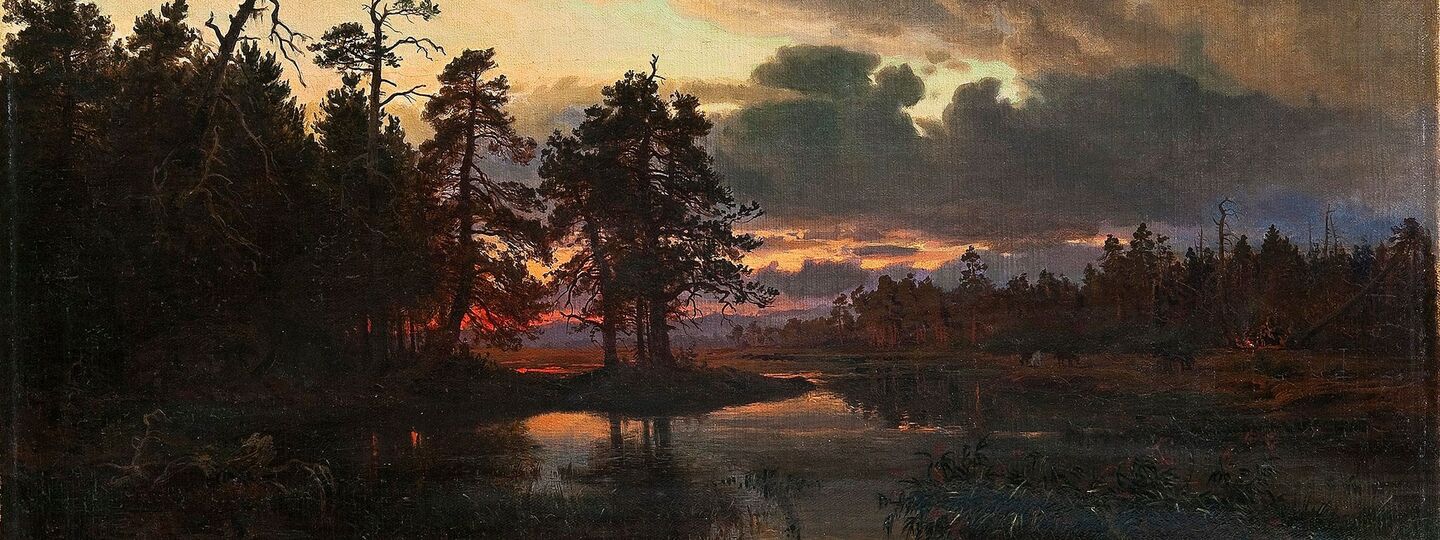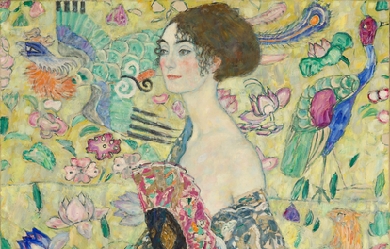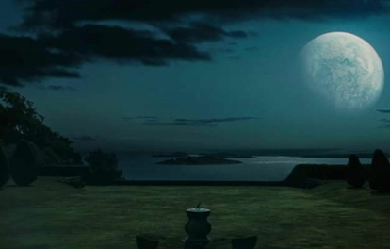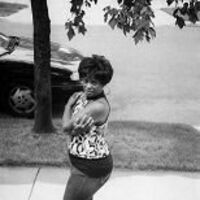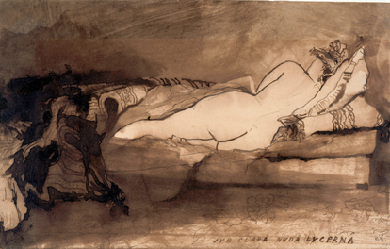
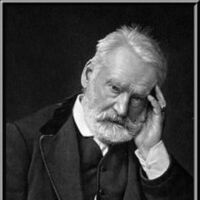
Victor Hugo est un poète, dramaturge, prosateur et dessinateur romantique français, né à Besançon le 26 février 1802 (le 7 ventôse an X selon le calendrier républicain encore en vigueur) et mort le 22 mai 1885 à Paris. Il est considéré comme l’un des plus importants écrivains de langue française. Il est aussi une personnalité politique et un intellectuel engagé qui a joué un rôle majeur dans l’histoire du xixe siècle. Il occupe une place marquante dans l’histoire des lettres françaises au xixe siècle, dans des genres et des domaines d’une remarquable variété. Au théâtre, Victor Hugo se manifeste comme un des chefs de file du Romantisme français lorsqu'il expose sa théorie du drame romantique dans les préfaces qui introduisent Cromwell en 1827, puis Hernani en 1830 qui sont de véritables manifestes, puis par ses autres œuvres dramatiques : Ruy Blas en 1838, mais aussi Lucrèce Borgia et Le Roi s'amuse.
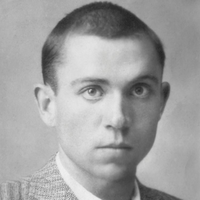
Miguel Hernández (Orihuela, 1910 – Alicante, 1942) Poeta español. Adscrito a la Generación del 27, destacó por la hondura y autenticidad de sus versos, reflejo de su compromiso social y político. Nacido en el seno de una familia humilde y criado en el ambiente campesino de Orihuela, de niño fue pastor de cabras y no tuvo acceso más que a estudios muy elementales, por lo que su formación fue autodidacta.
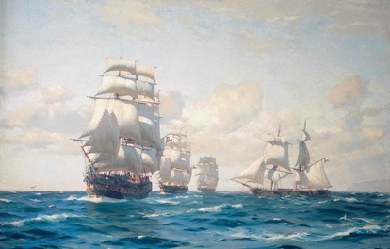
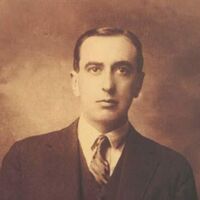
Vicente García-Huidobro Fernández (Santiago, 10 de enero de 1893 – Cartagena, 2 de enero de 1948), más conocido como Vicente Huidobro, fue un poeta chileno. Iniciador y exponente del creacionismo, es considerado uno de los más destacados poetas chilenos, junto con Gabriela Mistral, Pablo Neruda y Pablo de Rokha. Nació en el seno de una familia adinerada, relacionada con la política y la banca. Su padre era el heredero del marquesado de Casa Real y su madre, una activista feminista y anfitriona de numerosas veladas literarias.
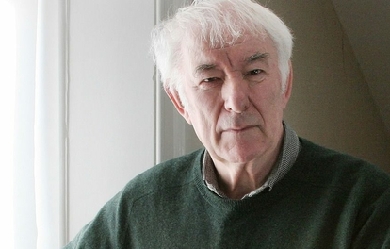
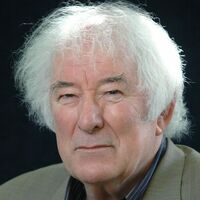
Seamus Justin Heaney (13 April 1939 – 30 August 2013) was an Irish poet, playwright and translator. He received the 1995 Nobel Prize in Literature. Among his best-known works is Death of a Naturalist (1966), his first major published volume. Heaney was and is still recognised as one of the principal contributors to poetry in Ireland during his lifetime. American poet Robert Lowell described him as “the most important Irish poet since Yeats”, and many others, including the academic John Sutherland, have said that he was “the greatest poet of our age”. Robert Pinsky has stated that “with his wonderful gift of eye and ear Heaney has the gift of the story-teller.” Upon his death in 2013, The Independent described him as “probably the best-known poet in the world”.

These poems are all my original work, I write from the heart and my head for my own sanity! I do not share these with anyone I know... These are my inner most thoughts written directly on here to share with others as part of my healing process. Unfortunately most of my self penned poetry is dark and sacred to me- by writing on here I feel I am able to express myself freely with the knowledge that there are like minded people who can relate to my poems... As much as I can relate to theirs...
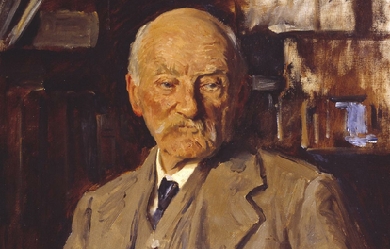
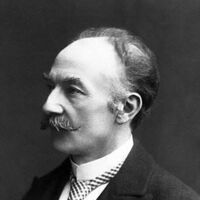
Thomas Hardy (2 June 1840 – 11 January 1928) was an English novelist and poet. While his works typically belong to the Naturalism movement, several poems display elements of the previous Romantic and Enlightenment periods of literature, such as his fascination with the supernatural. While he regarded himself primarily as a poet who composed novels mainly for financial gain, he became and continues to be widely regarded for his novels, such as Tess of the d'Urbervilles and Far from the Madding Crowd. Hardy's poetry, first published in his fifties, has come to be as well regarded as his novels and has had a significant influence over modern English poetry, especially after The Movement poets of the 1950s and 1960s cited Hardy as a major figure.
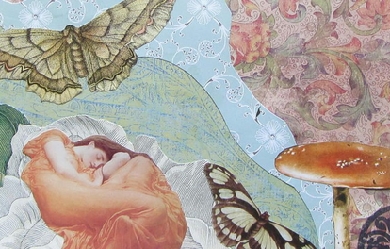
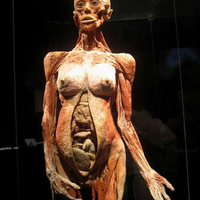
I live and I write...... My life is a canvas and I have arranged the qualities of myself so perfectly as to contradict angelic purity and blasphemy in such a way that it is irresistible to all lovers, and all tragic romantics, all of those with open hearts to warm themselves. So warm your hearts in the oh so soothing sometimes painful flame that exhumes from me. It has laid in my body as a coffin for to many centuries, its about time i let it out now.
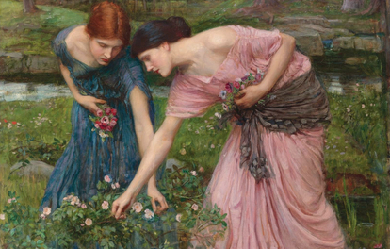
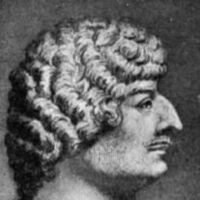
Robert Herrick (baptized 24 August 1591 – buried 15 October 1674) was a 17th-century English poet. Born in Cheapside, London, he was the seventh child and fourth son of Julia Stone and Nicholas Herrick, a prosperous goldsmith. His father died in a fall from a fourth-floor window in November 1592, when Robert was a year old (whether this was suicide remains unclear). The tradition that Herrick received his education at Westminster is groundless. It is more likely that (like his uncle's children) he attended The Merchant Taylors' School. In 1607 he became apprenticed to his uncle, Sir William Herrick, who was a goldsmith and jeweler to the king. The apprenticeship ended after only six years when Herrick, at age twenty-two, matriculated at St John's College, Cambridge. He graduated in 1617. Robert Herrick became a member of the Sons of Ben, a group centered upon an admiration for the works of Ben Jonson. Herrick wrote at least five poems to Jonson. Herrick took holy orders in 1623, and in 1629 he became vicar of Dean Prior in Devonshire. In 1647, in the wake of the English Civil War, Herrick was ejected from his vicarage for refusing the Solemn League and Covenant. He then returned to London, living in Westminster and depending on the charity of his friends and family. He spent some time preparing his lyric poems for publication, and had them printed in 1648 under the title Hesperides; or the Works both Human and Divine of Robert Herrick, with a dedication to the Prince of Wales. When King Charles II was restored to the throne in 1660, Herrick petitioned for his own restoration to his living. Perhaps King Charles felt kindly towards this genial man, who had written verses celebrating the births of both Charles II and his brother James before the Civil War. Herrick became the vicar of Dean Prior again in the summer of 1662 and lived there until his death in October 1674, at the ripe age of 83. His date of death is not known, but he was buried on 15 October. Herrick was a bachelor all his life, and many of the women he names in his poems are thought to be fictional. Poetic style and stature Herrick wrote over 2,500 poems, about half of which appear in his major work, Hesperides. Hesperides also includes the much shorter Noble Numbers, his first book, of spiritual works, first published in 1647. He is well-known for his style and, in his earlier works, frequent references to lovemaking and the female body. His later poetry was more of a spiritual and philosophical nature. Among his most famous short poetical sayings are the unique monometers, such as "Thus I / Pass by / And die,/ As one / Unknown / And gone." Herrick sets out his subject-matter in the poem he printed at the beginning of his collection, The Argument of his Book. He dealt with English country life and its seasons, village customs, complimentary poems to various ladies and his friends, themes taken from classical writings and a solid bedrock of Christian faith, not intellectualized but underpinning the rest. Herrick never married, and none of his love-poems seem to connect directly with any one beloved woman. He loved the richness of sensuality and the variety of life, and this is shown vividly in such poems as Cherry-ripe, Delight in Disorder and Upon Julia’s Clothes. The over-riding message of Herrick’s work is that life is short, the world is beautiful, love is splendid, and we must use the short time we have to make the most of it. This message can be seen clearly in To the Virgins, to make much of Time, To Daffodils, To Blossoms and Corinna going a-Maying, where the warmth and exuberance of what seems to have been a kindly and jovial personality comes over strongly. The opening stanza in one of his more famous poems, "To the Virgins, to Make Much of Time", is as follows: Gather ye rosebuds while ye may, Old Time is still a-flying; And this same flower that smiles today, Tomorrow will be dying. This poem is an example of the carpe diem genre; the popularity of Herrick's poems of this kind helped revive the genre. His poems were not widely popular at the time they were published. His style was strongly influenced by Ben Jonson, by the classical Roman writers, and by the poems of the late Elizabethan era. This must have seemed quite old-fashioned to an audience whose tastes were tuned to the complexities of the metaphysical poets such as John Donne and Andrew Marvell. His works were rediscovered in the early nineteenth century, and have been regularly printed ever since. The Victorian poet Swinburne described Herrick as the greatest song writer...ever born of English race. It is certainly true that despite his use of classical allusions and names, his poems are easier for modern readers to understand than those of many of his contemporaries. Robert Herrick is a major character in Rose Macaulay's 1932 historical novel, They Were Defeated. References Wikipedia - http://en.wikipedia.org/wiki/Robert_Herrick_(poet)

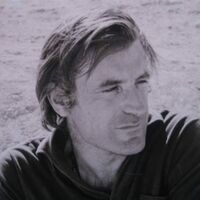
Edward James (Ted) Hughes was born in Mytholmroyd, in the West Riding district of Yorkshire, on August 17, 1930. His childhood was quiet and dominately rural. When he was seven years old, his family moved to the small town of Mexborough in South Yorkshire, and the landscape of the moors of that area informed his poetry throughout his life. Hughes graduated from Cambridge in 1954. A few years later, in 1956, he co-founded the literary magazine St. Botolph’s Review with a handful of other editors. At the launch party for the magazine, he met Sylvia Plath. A few short months later, on June 16, 1956, they were married.
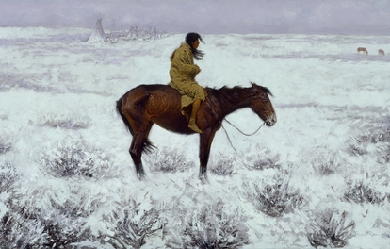
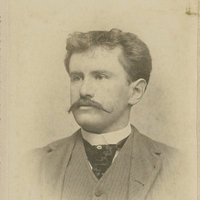
William Sydney Porter (September 11, 1862– June 5, 1910), known by his pen name O. Henry, was an American short story writer. His stories are known for their surprise endings. Biography Early life William Sidney Porter was born on September 11, 1862, in Greensboro, North Carolina. He changed the spelling of his middle name to Sydney in 1898. His parents were Dr. Algernon Sidney Porter (1825–88), a physician, and Mary Jane Virginia Swaim Porter (1833–65). William’s parents had married on April 20, 1858. When William was three, his mother died from tuberculosis, and he and his father moved into the home of his paternal grandmother. As a child, Porter was always reading, everything from classics to dime novels; his favorite works were Lane’s translation of One Thousand and One Nights and Burton’s Anatomy of Melancholy. Porter graduated from his aunt Evelina Maria Porter’s elementary school in 1876. He then enrolled at the Lindsey Street High School. His aunt continued to tutor him until he was fifteen. In 1879, he started working in his uncle’s drugstore in Greensboro, and on August 30, 1881, at the age of nineteen, Porter was licensed as a pharmacist. At the drugstore, he also showed off his natural artistic talents by sketching the townsfolk. Move to Texas Porter traveled with Dr. James K. Hall to Texas in March 1882, hoping that a change of air would help alleviate a persistent cough he had developed. He took up residence on the sheep ranch of Richard Hall, James’ son, in La Salle County and helped out as a shepherd, ranch hand, cook, and baby-sitter. While on the ranch, he learned bits of Spanish and German from the mix of immigrant ranch hands. He also spent time reading classic literature. Porter’s health did improve. He traveled with Richard to Austin in 1884, where he decided to remain and was welcomed into the home of Richard’s friends, Joseph Harrell and his wife. Porter resided with the Harrells for three years. He went to work briefly for the Morley Brothers Drug Company as a pharmacist. Porter then moved on to work for the Harrell Cigar Store located in the Driskill Hotel. He also began writing as a sideline and wrote many of his early stories in the Harrell house. As a young bachelor, Porter led an active social life in Austin. He was known for his wit, story-telling and musical talents. He played both the guitar and mandolin. He sang in the choir at St. David’s Episcopal Church and became a member of the “Hill City Quartette”, a group of young men who sang at gatherings and serenaded young women of the town. Porter met and began courting Athol Estes, then seventeen years old and from a wealthy family. Historians believe Porter met Athol at the laying of the cornerstone of the Texas State Capitol on March 2, 1885. Her mother objected to the match because Athol was ill, suffering from tuberculosis. On July 1, 1887, Porter eloped with Athol and were married in the parlor of the home of Reverend R. K. Smoot, pastor of the Central Presbyterian Church, where the Estes family attended church. The couple continued to participate in musical and theater groups, and Athol encouraged her husband to pursue his writing. Athol gave birth to a son in 1888, who died hours after birth, and then a daughter, Margaret Worth Porter, in September 1889. Porter’s friend Richard Hall became Texas Land Commissioner and offered Porter a job. Porter started as a draftsman at the Texas General Land Office (GLO) on January 12, 1887 at a salary of $100 a month, drawing maps from surveys and fieldnotes. The salary was enough to support his family, but he continued his contributions to magazines and newspapers. In the GLO building, he began developing characters and plots for such stories as “Georgia’s Ruling” (1900), and “Buried Treasure” (1908). The castle-like building he worked in was even woven into some of his tales such as "Bexar Scrip No. 2692" (1894). His job at the GLO was a political appointment by Hall. Hall ran for governor in the election of 1890 but lost. Porter resigned on January 21, 1891, the day after the new governor, Jim Hogg, was sworn in. The same year, Porter began working at the First National Bank of Austin as a teller and bookkeeper at the same salary he had made at the GLO. The bank was operated informally, and Porter was apparently careless in keeping his books and may have embezzled funds. In 1894, he was accused by the bank of embezzlement and lost his job but was not indicted at the time. He then worked full-time on his humorous weekly called The Rolling Stone, which he started while working at the bank. The Rolling Stone featured satire on life, people and politics and included Porter’s short stories and sketches. Although eventually reaching a top circulation of 1500, The Rolling Stone failed in April 1895, since the paper never provided an adequate income. However, his writing and drawings had caught the attention of the editor at the Houston Post. Porter and his family moved to Houston in 1895, where he started writing for the Post. His salary was only $25 a month, but it rose steadily as his popularity increased. Porter gathered ideas for his column by loitering in hotel lobbies and observing and talking to people there. This was a technique he used throughout his writing career. While he was in Houston, federal auditors audited the First National Bank of Austin and found the embezzlement shortages that led to his firing. A federal indictment followed, and he was arrested on charges of embezzlement. Flight and return Porter’s father-in-law posted bail to keep him out of jail. He was due to stand trial on July 7, 1896, but the day before, as he was changing trains to get to the courthouse, an impulse hit him. He fled, first to New Orleans and later to Honduras, with which the United States had no extradition treaty at that time. William lived in Honduras for only six months, until January 1897. There he became friends with Al Jennings, a notorious train robber, who later wrote a book about their friendship. He holed up in a Trujillo hotel, where he wrote Cabbages and Kings, in which he coined the term “banana republic” to qualify the country, a phrase subsequently used widely to describe a small, unstable tropical nation in Latin America with a narrowly focused, agrarian economy. Porter had sent Athol and Margaret back to Austin to live with Athol’s parents. Unfortunately, Athol became too ill to meet Porter in Honduras as he had planned. When he learned that his wife was dying, Porter returned to Austin in February 1897 and surrendered to the court, pending trial. Athol Estes Porter died from tuberculosis (then known as consumption) on July 25, 1897. Porter had little to say in his own defense at his trial and was found guilty on February 17, 1898 of embezzling $854.08. He was sentenced to five years in prison and imprisoned on March 25, 1898, at the Ohio Penitentiary in Columbus, Ohio. Porter was a licensed pharmacist and was able to work in the prison hospital as the night druggist. He was given his own room in the hospital wing, and there is no record that he actually spent time in the cell block of the prison. He had fourteen stories published under various pseudonyms while he was in prison but was becoming best known as “O. Henry”, a pseudonym that first appeared over the story “Whistling Dick’s Christmas Stocking” in the December 1899 issue of McClure’s Magazine. A friend of his in New Orleans would forward his stories to publishers so that they had no idea that the writer was imprisoned. Porter was released on July 24, 1901, for good behavior after serving three years. He reunited with his daughter Margaret, now age 11, in Pittsburgh, Pennsylvania, where Athol’s parents had moved after Porter’s conviction. Margaret was never told that her father had been in prison—just that he had been away on business. Later life and death Porter’s most prolific writing period started in 1902, when he moved to New York City to be near his publishers. While there, he wrote 381 short stories. He wrote a story a week for over a year for the New York World Sunday Magazine. His wit, characterization, and plot twists were adored by his readers but often panned by critics. Porter married again in 1907 to childhood sweetheart Sarah (Sallie) Lindsey Coleman, whom he met again after revisiting his native state of North Carolina. Sarah Lindsey Coleman was herself a writer and wrote a romanticized and fictionalized version of their correspondence and courtship in her novella Wind of Destiny. Porter was a heavy drinker, and by 1908, his markedly deteriorating health affected his writing. In 1909, Sarah left him, and he died on June 5, 1910, of cirrhosis of the liver, complications of diabetes, and an enlarged heart. After funeral services in New York City, he was buried in the Riverside Cemetery in Asheville, North Carolina. His daughter, Margaret Worth Porter, had a short writing career from 1913 to 1916. She married cartoonist Oscar Cesare of New York in 1916; they were divorced four years later. She died of tuberculosis in 1927 and is buried next to her father. Stories O. Henry’s stories frequently have surprise endings. In his day he was called the American answer to Guy de Maupassant. While both authors wrote plot twist endings, O. Henry’s stories were considerably more playful. His stories are also known for witty narration. Most of O. Henry’s stories are set in his own time, the early 20th century. Many take place in New York City and deal for the most part with ordinary people: policemen, waitresses, etc. O. Henry’s work is wide-ranging, and his characters can be found roaming the cattle-lands of Texas, exploring the art of the con-man, or investigating the tensions of class and wealth in turn-of-the-century New York. O. Henry had an inimitable hand for isolating some element of society and describing it with an incredible economy and grace of language. Some of his best and least-known work is contained in Cabbages and Kings, a series of stories each of which explores some individual aspect of life in a paralytically sleepy Central American town, while advancing some aspect of the larger plot and relating back one to another. Cabbages and Kings was his first collection of stories, followed by The Four Million. The second collection opens with a reference to Ward McAllister’s “assertion that there were only 'Four Hundred’ people in New York City who were really worth noticing. But a wiser man has arisen—the census taker—and his larger estimate of human interest has been preferred in marking out the field of these little stories of the ‘Four Million.’” To O. Henry, everyone in New York counted. He had an obvious affection for the city, which he called “Bagdad-on-the-Subway”, and many of his stories are set there—while others are set in small towns or in other cities. His final work was “Dream”, a short story intended for the magazine The Cosmopolitan but left incomplete at the time of his death. Among his most famous stories are: “The Gift of the Magi” about a young couple, Jim and Della, who are short of money but desperately want to buy each other Christmas gifts. Unbeknownst to Jim, Della sells her most valuable possession, her beautiful hair, in order to buy a platinum fob chain for Jim’s watch; while unbeknownst to Della, Jim sells his own most valuable possession, his watch, to buy jeweled combs for Della’s hair. The essential premise of this story has been copied, re-worked, parodied, and otherwise re-told countless times in the century since it was written. “The Ransom of Red Chief”, in which two men kidnap a boy of ten. The boy turns out to be so bratty and obnoxious that the desperate men ultimately pay the boy’s father $250 to take him back. “The Cop and the Anthem” about a New York City hobo named Soapy, who sets out to get arrested so that he can be a guest of the city jail instead of sleeping out in the cold winter. Despite efforts at petty theft, vandalism, disorderly conduct, and “mashing” with a young prostitute, Soapy fails to draw the attention of the police. Disconsolate, he pauses in front of a church, where an organ anthem inspires him to clean up his life—and is ironically charged for loitering and sentenced to three months in prison. “A Retrieved Reformation”, which tells the tale of safecracker Jimmy Valentine, recently freed from prison. He goes to a town bank to case it before he robs it. As he walks to the door, he catches the eye of the banker’s beautiful daughter. They immediately fall in love and Valentine decides to give up his criminal career. He moves into the town, taking up the identity of Ralph Spencer, a shoemaker. Just as he is about to leave to deliver his specialized tools to an old associate, a lawman who recognizes him arrives at the bank. Jimmy and his fiancée and her family are at the bank, inspecting a new safe when a child accidentally gets locked inside the airtight vault. Knowing it will seal his fate, Valentine opens the safe to rescue the child. However, much to Valentine’s surprise, the lawman denies recognizing him and lets him go. “The Duplicity of Hargraves”. A short story about a nearly destitute father and daughter’s trip to Washington, D.C. “The Caballero’s Way”, in which Porter’s most famous character, the Cisco Kid, is introduced. It was first published in 1907 in the July issue of Everybody’s Magazine and collected in the book Heart of the West that same year. In later film and TV depictions, the Kid would be portrayed as a dashing adventurer, perhaps skirting the edges of the law, but primarily on the side of the angels. In the original short story, the only story by Porter to feature the character, the Kid is a murderous, ruthless border desperado, whose trail is dogged by a heroic Texas Ranger. The twist ending is, unusually for Porter, tragic. Pen name Porter used a number of pen names (including “O. Henry” or “Olivier Henry”) in the early part of his writing career; other names included S.H. Peters, James L. Bliss, T.B. Dowd, and Howard Clark. Nevertheless, the name “O. Henry” seemed to garner the most attention from editors and the public, and was used exclusively by Porter for his writing by about 1902. He gave various explanations for the origin of his pen name. In 1909 he gave an interview to The New York Times, in which he gave an account of it: It was during these New Orleans days that I adopted my pen name of O. Henry. I said to a friend: “I’m going to send out some stuff. I don’t know if it amounts to much, so I want to get a literary alias. Help me pick out a good one.” He suggested that we get a newspaper and pick a name from the first list of notables that we found in it. In the society columns we found the account of a fashionable ball. “Here we have our notables,” said he. We looked down the list and my eye lighted on the name Henry, “That’ll do for a last name,” said I. “Now for a first name. I want something short. None of your three-syllable names for me.” “Why don’t you use a plain initial letter, then?” asked my friend. “Good,” said I, “O is about the easiest letter written, and O it is.” A newspaper once wrote and asked me what the O stands for. I replied, “O stands for Olivier, the French for Oliver.” And several of my stories accordingly appeared in that paper under the name Olivier Henry. William Trevor writes in the introduction to The World of O. Henry: Roads of Destiny and Other Stories (Hodder & Stoughton, 1973) that “there was a prison guard named Orrin Henry” in the Ohio State Penitentiary “whom William Sydney Porter... immortalised as O. Henry”. According to J. F. Clarke, it is from the name of the French pharmacist Etienne Ossian Henry, whose name is in the U. S. Dispensary which Porter used working in the prison pharmacy. Writer and scholar Guy Davenport offers his own hypothesis: “The pseudonym that he began to write under in prison is constructed from the first two letters of Ohio and the second and last two of penitentiary.” Legacy The O. Henry Award is a prestigious annual prize named after Porter and given to outstanding short stories. A film was made in 1952 featuring five stories, called O. Henry’s Full House. The episode garnering the most critical acclaim was “The Cop and the Anthem” starring Charles Laughton and Marilyn Monroe. The other stories are “The Clarion Call”, “The Last Leaf”, “The Ransom of Red Chief” (starring Fred Allen and Oscar Levant), and “The Gift of the Magi”. The O. Henry House and O. Henry Hall, both in Austin, Texas, are named for him. O. Henry Hall, now owned by the Texas State University System, previously served as the federal courthouse in which O. Henry was convicted of embezzlement. Porter has elementary schools named for him in Greensboro, North Carolina (William Sydney Porter Elementary) and Garland, Texas (O. Henry Elementary), as well as a middle school in Austin, Texas (O. Henry Middle School). The O. Henry Hotel in Greensboro is also named for Porter, as is US 29 which is O. Henry Boulevard. In 1962, the Soviet Postal Service issued a stamp commemorating O. Henry’s 100th birthday. On September 11, 2012, the U.S. Postal Service issued a stamp commemorating the 150th anniversary of O. Henry’s birth. On November 23, 2011, Barack Obama quoted O. Henry while granting pardons to two turkeys named “Liberty” and “Peace”. In response, political science professor P. S. Ruckman, Jr., and Texas attorney Scott Henson filed a formal application for a posthumous pardon in September 2012, the same month that the U.S. Postal Service issued its O. Henry stamp. Previous attempts were made to obtain such a pardon for Porter in the administrations of Woodrow Wilson, Dwight Eisenhower, and Ronald Reagan, but no one had ever bothered to file a formal application. Ruckman and Henson argued that Porter deserved a pardon because (1) he was a law-abiding citizen prior to his conviction; (2) his offense was minor; (3) he had an exemplary prison record; (4) his post-prison life clearly indicated rehabilitation; (5) he would have been an excellent candidate for clemency in his time, had he but applied for pardon; (6) by today’s standards, he remains an excellent candidate for clemency; and (7) his pardon would be a well-deserved symbolic gesture and more. O. Henry’s love of language inspired the O. Henry Pun-Off, an annual spoken word competition began in 1978 that takes place at the O. Henry House. Bibliography * Cabbages and Kings (1904) * The Four Million (1906), short stories * The Trimmed Lamp (1907), short stories: “The Trimmed Lamp”, “A Madison Square Arabian Night”, “The Rubaiyat of a Scotch Highball”, “The Pendulum”, “Two Thanksgiving Day Gentlemen”, “The Assessor of Success”, “The Buyer from Cactus City”, “The Badge of Policeman O’Roon”, “Brickdust Row”, “The Making of a New Yorker”, “Vanity and Some Sables”, “The Social Triangle”, “The Purple Dress”, "The Foreign Policy of Company 99", “The Lost Blend”, “A Harlem Tragedy”, “'The Guilty Party’”, “According to Their Lights”, “A Midsummer Knight’s Dream”, “The Last Leaf”, “The Count and the Wedding Guest”, “The Country of Elusion”, “The Ferry of Unfulfilment”, “The Tale of a Tainted Tenner”, “Elsie in New York” * Heart of the West (1907), short stories: “Hearts and Crosses”, “The Ransom of Mack”, “Telemachus, Friend”, “The Handbook of Hymen”, “The Pimienta Pancakes”, “Seats of the Haughty”, “Hygeia at the Solito”, “An Afternoon Miracle”, “The Higher Abdication”, "Cupid à la Carte", “The Caballero’s Way”, “The Sphinx Apple”, “The Missing Chord”, “A Call Loan”, “The Princess and the Puma”, “The Indian Summer of Dry Valley Johnson”, “Christmas by Injunction”, “A Chaparral Prince”, “The Reformation of Calliope” * The Voice of the City (1908), short stories: “The Voice of the City”, “The Complete Life of John Hopkins”, “A Lickpenny Lover”, “Dougherty’s Eye-opener”, “'Little Speck in Garnered Fruit’”, “The Harbinger”, “While the Auto Waits”, “A Comedy in Rubber”, “One Thousand Dollars”, “The Defeat of the City”, “The Shocks of Doom”, “The Plutonian Fire”, “Nemesis and the Candy Man”, “Squaring the Circle”, “Roses, Ruses and Romance”, “The City of Dreadful Night”, “The Easter of the Soul”, “The Fool-killer”, “Transients in Arcadia”, “The Rathskeller and the Rose”, “The Clarion Call”, “Extradited from Bohemia”, “A Philistine in Bohemia”, “From Each According to His Ability”, “The Memento” * The Gentle Grafter (1908), short stories: “The Octopus Marooned”, “Jeff Peters as a Personal Magnet”, “Modern Rural Sports”, “The Chair of Philanthromathematics”, “The Hand That Riles the World”, “The Exact Science of Matrimony”, “A Midsummer Masquerade”, “Shearing the Wolf”, “Innocents of Broadway”, “Conscience in Art”, “The Man Higher Up”, “Tempered Wind”, “Hostages to Momus”, “The Ethics of Pig” * Roads of Destiny (1909), short stories: “Roads of Destiny”, “The Guardian of the Accolade”, “The Discounters of Money”, “The Enchanted Profile”, “Next to Reading Matter”, “Art and the Bronco”, "Phœbe", “A Double-dyed Deceiver”, “The Passing of Black Eagle”, “A Retrieved Reformation”, “Cherchez la Femme”, “Friends in San Rosario”, “The Fourth in Salvador”, “The Emancipation of Billy”, “The Enchanted Kiss”, “A Departmental Case”, “The Renaissance at Charleroi”, “On Behalf of the Management”, “Whistling Dick’s Christmas Stocking”, “The Halberdier of the Little Rheinschloss”, “Two Renegades”, “The Lonesome Road” * Options (1909), short stories: “'The Rose of Dixie’”, “The Third Ingredient”, “The Hiding of Black Bill”, “Schools and Schools”, “Thimble, Thimble”, “Supply and Demand”, “Buried Treasure”, “To Him Who Waits”, “He Also Serves”, “The Moment of Victory”, “The Head-hunter”, “No Story”, “The Higher Pragmatism”, “Best-seller”, “Rus in Urbe”, “A Poor Rule” * Strictly Business (1910), short stories: “Strictly Business”, “The Gold That Glittered”, “Babes in the Jungle”, “The Day Resurgent”, “The Fifth Wheel”, “The Poet and the Peasant”, “The Robe of Peace”, “The Girl and the Graft”, “The Call of the Tame”, “The Unknown Quantity”, “The Thing’s the Play”, “A Ramble in Aphasia”, “A Municipal Report”, “Psyche and the Pskyscraper”, “A Bird of Bagdad”, “Compliments of the Season”, “A Night in New Arabia”, “The Girl and the Habit”, “Proof of the Pudding”, “Past One at Rooney’s”, “The Venturers”, “The Duel”, “'What You Want’” * Whirligigs (1910), short stories: “The World and the Door”, “The Theory and the Hound”, “The Hypotheses of Failure”, “Calloway’s Code”, “A Matter of Mean Elevation”, “Girl”, “Sociology in Serge and Straw”, “The Ransom of Red Chief”, “The Marry Month of May”, “A Technical Error”, “Suite Homes and Their Romance”, “The Whirligig of Life”, “A Sacrifice Hit”, “The Roads We Take”, “A Blackjack Bargainer, ”The Song and the Sergeant", “One Dollar’s Worth”, “A Newspaper Story”, “Tommy’s Burglar”, “A Chaparral Christmas Gift”, “A Little Local Colour”, “Georgia’s Ruling”, “Blind Man’s Holiday”, “Madame Bo-Peep of the Ranches” * Sixes and Sevens (1911), short stories: “The Last of the Troubadours”, “The Sleuths”, “Witches’ Loaves”, “The Pride of the Cities”, “Holding Up a Train”, “Ulysses and the Dogman”, “The Champion of the Weather”, “Makes the Whole World Kin”, “At Arms with Morpheus”, “A Ghost of a Chance”, “Jimmy Hayes and Muriel”, “The Door of Unrest”, “The Duplicity of Hargraves”, “Let Me Feel Your Pulse”, “October and June”, “The Church with an Overshot-Wheel”, “New York by Camp Fire Light”, “The Adventures of Shamrock Jolnes”, “The Lady Higher Up”, “The Greater Coney”, “Law and Order”, “Transformation of Martin Burney”, “The Caliph and the Cad”, “The Diamond of Kali”, “The Day We Celebrate” * Rolling Stones (1912), short stories: “The Dream”, “A Ruler of Men”, “The Atavism of John Tom Little Bear”, “Helping the Other Fellow”, “The Marionettes”, “The Marquis and Miss Sally”, “A Fog in Santone”, “The Friendly Call”, “A Dinner at———”, “Sound and Fury”, “Tictocq”, “Tracked to Doom”, “A Snapshot at the President”, “An Unfinished Christmas Story”, “The Unprofitable Servant”, “Aristocracy Versus Hash”, “The Prisoner of Zembla”, “A Strange Story”, “Fickle Fortune, or How Gladys Hustled”, “An Apology”, “Lord Oakhurst’s Curse”, "Bexar Scrip No. 2692” * Waifs and Strays (1917), short stories References Wikipedia—https://en.wikipedia.org/wiki/O._Henry

*CURRENTLY REVISING ALL POEMS* My relationship with life made me an empath when it comes to others, yet a cynic when it comes to myself | 28 years old | Figuring out life a little more all the time—growing | I only write what I know Experiences give you something to write about, so painful or wonderful, those times have fueled my poetry/creativity | Never go back unless to visit; always keep moving forward 🌺 Hayley Christine Currie
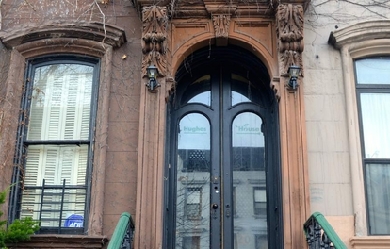
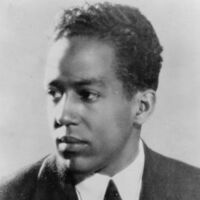
James Mercer Langston Hughes (February 1, 1902 – May 22, 1967) was an American poet, social activist, novelist, playwright, and columnist. He was one of the earliest innovators of the then-new literary art form jazz poetry. Hughes is best known for his work during the Harlem Renaissance. He famously wrote about the period that “the negro was in vogue” which was later paraphrased as “when Harlem was in vogue”.
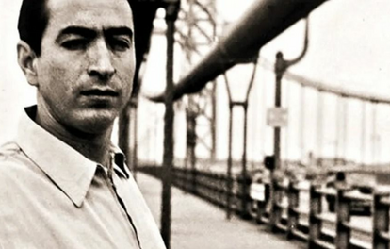
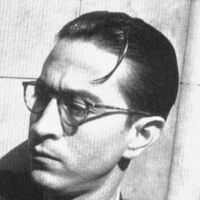
Efraín Huerta (Silao, Guanajuato, 18 de junio de 1914 - Ciudad de México, 20 de febrero de 1982). Poeta mexicano. Legado principal El legado principal de Efraín Huerta es el libro Los hombres del alba (1944) que marca una ruptura con las formas poéticas utilizadas hasta ese momento. Es uno de los libros cumbres de la poesía hispanoamericana del siglo veinte. Comienzos Efraín Huerta Romo fue uno de los poetas más reconocidos de México, cuyos versos se caracterizaban por ir en contra de lo establecido en términos estilísticos. Fue además un activista político de la izquierda latinoamericana. Inició sus estudios de derecho en la ciudad de México, pero los abandonó para dedicarse al periodismo y a la literatura. Su primer poemario (Absoluto amor), se caracterizó por su liricismo amoroso, pero tras su vinculación con la revista Taller evolucionó hacia una poesía que reflejaba tanto la subjetividad personal como las circunstancias políticas y sociales. A partir de 1950 inició el movimiento neovanguardista de "El cocodrilismo" por lo que fue conocido como "El gran Cocodrilo". Trayectoria De 1938 a 1941 participó en la publicación de la revista literaria Taller, al lado de sus compañeros universitarios que se dedicaban a las letras (Alberto Quintero Álvarez, Octavio Paz y Rafael Solana, entre otros). Entre los muchos premios que el otorgaron, recibió las Palmas Académicas del gobierno de Francia en 1945, en 1975 el Premio Xavier Villaurrutia,2 el Premio Nacional de Lingüística y Literatura en 1976,3 y el Premio Nacional de Periodismo en divulgación cultural de 1978 por su trabajo en el suplemento El Gallo Ilustrado del periódico El Día.4 Fue uno de los periodistas cinematográficos más importantes de México y sus columnas aparecieron en prácticamente todas las revistas especializadas de las décadas de 1940 y 1950. Sus columnas de tema literario y político aparecieron también en los principales diarios del país desde los años treinta hasta 1982, año de su muerte. Obra poética Su poesía fue reunida en un tomo de más de seiscientas páginas editado por Martí Soler y publicado por el Fondo de Cultura Económica en 1988. * 1935 - Absoluto amor * 1936 - Línea del alba * 1944 - Los hombres del alba * 1943 - Poemas de guerra y esperanza * 1950 - La rosa primitiva * 1951 - Poesía * 1953 - Poemas de viaje * 1956 - Estrella en alto y nuevos poemas * 1957 - Para gozar tu paz * 1959 - ¡Mi país, oh mi país! * 1959 - Elegía de la policía montada * 1961 - Farsa trágica del presidente que quería una isla * 1962 - La raíz amarga * 1963 - El Tajín * 1973 - Poemas prohibidos y de amor * 1974 - Los eróticos y otros poemas * 1980 - Estampida de poemínimos * 1980 - Transa poética * 1985 - Estampida de Poemínimos Entre sus muchos poemas destacan sus Poemínimos, diminutos poemas parecidos a los haikus, entre ellos el titulado Pequeño Larousse, que habla de lo que dice su entrada en dicho diccionario enciclopédico: "...Nació En Silao. 1914. Autor De versos De contenido Social..." Embustero Larousse. Yo sólo Escribo Versos De contenido Sexual. Y el titulado Tótem: Tótem Siempre Amé Con la Furia Silenciosa De un Cocodrilo Aletargado Referencias Wikipedia - http://es.wikipedia.org/wiki/Efraín_Huerta
twenty-six year old poet from central scotland themes of: insomnia, solipsism, separation, confession, trippy-abstract, four a.m. word-spillage poetry & prose reader for the levatio published by honey & lime, the levatio, women in law @ the university of glasgow, vita brevis press, qmunicate ~ medium: @hollylm twitter: @hollylmckenna instagram: @beltanewean threads: @beltanewean bluesky: @hollylmckenna

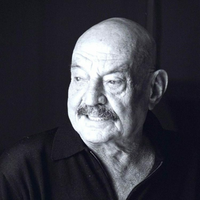
José Hierro del Real (Madrid, 3 de abril de 1922 - Madrid, 21 de diciembre de 2002), conocido como José Hierro o Pepe Hierro, fue un poeta español. Pertenece a la llamada primera generación de la posguerra dentro de la llamada poesía desarraigada o existencial (publicó en las revistas Espadaña y Garcilaso). En sus primeros libros, Hierro se mantuvo al margen de las tendencias dominantes y decidió continuar la obra de Juan Ramón Jiménez, Antonio Machado, Pedro Salinas, Gerardo Diego e, incluso, Rubén Darío. Posteriormente, cuando la poesía social estaba en boga en España, hizo poesía con numerosos elementos experimentales (collage lingüístico, monólogo dramático, culturalismo...) Nació en Madrid en 1922, aunque la mayor parte de su vida la pasó en Cantabria, puesto que su familia se trasladó a Santander cuando José contaba con apenas dos años. Allí cursó la carrera de perito industrial, pero se vio obligado a interrumpirla en 1936, al comienzo de la Guerra Civil Española. Al finalizar la guerra fue detenido y encarcelado por pertenecer a una "organización de ayuda a los presos políticos", uno de los cuales era su propio padre, Joaquín Hierro, un funcionario de Telégrafos que el 18 de julio de 1936 interceptó el cable con que la Capitanía Militar de Burgos quería sublevar a la guarnición de Santander, pagándolo con la cárcel; su hijo también fue a prisión por sacar información de la misma cuando lo visitaba. Pasó cinco años encarcelado y fue liberado en enero de 1944 en Alcalá de Henares; hasta 1946 vivió en Valencia. Allí, en el Café El Gato Negro, participó en una tertulia literaria a la que asistían Ricardo Blasco, Angelina Gatell, Alejandro y Vicente Gaos, y Pedro Caba Landa, entre otros. Desempeñó entonces diversos oficios pane lucrando. En 1948, en el Diario Alerta de Santander, hizo su primera crítica pictórica -sobre la obra del pintor burgalés Modesto Ciruelos (íntimo amigo que falleció también en 2002), labor que continuó ejerciendo en distintos medios de comunicación, especialmente en Radio Nacional y el Diario Arriba de Madrid. En 1949 contrajo matrimonio con María de los Ángeles Torres. Funda la revista Proel, junto con Carlos Salomón y hasta 1952 dirige las publicaciones Cámara de Comercio y Cámara Sindical Agraria, para instalarse al fin en Madrid, donde reinició su carrera de escritor. Trabaja en el CSIC y en la Editorial Nacional. Colaboró en las revistas poéticas Corcel, Espadaña, Garcilaso. Juventud creadora, Poesía de España y Poesía Española, entre otras. Participó en los Congresos de Poesía de Segovia, 17 al 24 de junio de 1952 y Salamanca, 5 de julio de 1953; fue elegido miembro de la Real Academia Española en abril de 1999, pero no llegó a leer el discurso de ingreso porque poco después, en 2000, sufrió un infarto de miocardio que se le complicó con un enfisema por tabaquismo, de lo cual murió el 21 de diciembre de 2002. Poseía la curiosa superstición de no poder escribir nunca en su propia casa; era normal verlo en la cafetería de Avenida Ciudad de Barcelona, en Madrid; en ella y en otros cafés escribió toda su obra. Era sin embargo un trabajador lento y minucioso: algunos de sus poemas tardaron años en encontrar la forma definitiva. También se dedicó al dibujo ocasionalmente. José Hierro fue Premio Adonáis en 1947, Premio Nacional de Poesía (1953 y 1999), Premio de la Crítica (1958 y 1965), Premio de la Fundación Juan March (1959), Premio Príncipe de Asturias de las Letras en 1981, Premio Fundación Pablo Iglesias en 1986, Premio Nacional de las Letras Españolas en 1990, Premio Reina Sofía de Poesía Iberoamericana en 1995, Premio Cervantes en 1998, Premio Europeo de Literatura Aristeión en 1999 y Premio Ojo Crítico en 1999. Doctor Honoris Causa de la Universidad Internacional Menéndez y Pelayo en 1995 y en 2002 por la Universidad de Turín. Hijo Adoptivo de Cantabria en 1982. En 2002 el Ayuntamiento de Madrid le concedió la Medalla de Oro de la ciudad. El 25 de abril de 2008 la ciudad de Santander le rindió homenaje colocando un busto del poeta en el Paseo Marítimo, junto a Puertochico, inspirado en los versos de uno de sus poemas sobre la bahía: "Si muero, que me pongan desnudo, desnudo junto al mar. Serán las aguas grises mi escudo y no habrá que luchar". En San Sebastián de los Reyes (Madrid) también existe un busto del poeta frente al edificio que alberga la Universidad Popular José Hierro. En esta localidad tiene lugar el Premio Nacional de Poesía José Hierro, organizado por la Universidad Popular José Hierro y dotado con un único premio de 15.000 euros.2 En Cabezón de la Sal (Cantabria) también le hicieron tributo colocando otro busto en el Parque del Conde San Diego, lugar que visitaba cada año con motivo del Pregón del Día de Cantabria.[cita requerida] Análisis de su obra Sus primeros versos aparecen en distintas publicaciones del frente republicano. Acabada la contienda, padece cuatro años de cárcel, y esta experiencia lo marca indeleblemente. De ahí que, al reaparecer en el panorama lírico de los años cuarenta, con dos libros casi simultáneos, lo haga urgido por un amargo poso autobiográfico que dota a su poesía de una madurez poco frecuente en jóvenes poetas. Se titula el primero Tierra sin nosotros (1947), marbete que nos proporciona las desoladas claves donde arraiga, no ya sólo este libro, sino buena parte de la producción surgida de la guerra: la patria un día habitable aparece en ruinas. El libro siguiente, Alegría (1947) (Premio Adonáis), continúa la reflexión de Tierra sin nosotros. Con las piedras, con el viento (1950), es el testimonio de una experiencia amorosa abocada, también, al fracaso. Con Quinta del 42 (1953) comienza la exploración de la vía solidaria, nunca ajena a Hierro, pero, hasta ahora, sostenida en penumbra; no es, sin embargo, la suya una poesía social al uso, y esta diferencia desencadena, con anticipación de años, los mecanismos superadores de un realismo que por entonces amordazaba a la poesía española. Antirrealista es, en efecto, Cuanto sé de mí (1957), libro que acentúa la preocupación verbal, reivindica ámbitos imaginativos y se aleja de la historia y del tiempo para acceder a la «sonora gruta del enigma». Estos elementos culminan en el Libro de las alucinaciones (1964). Marcado por una poderosa veta irracionalista que se canaliza con frecuencia en el versículo, este poemario rompe definitivamente con las categorías espacio-temporales. En 1974 publicará una nueva edición de Cuanto sé de mí; en 1991, un nuevo libro de poemas titulado Agenda; en 1995 Emblemas neurorradiológicos y a finales de los 90 Cuaderno de Nueva York, considerada ésta última una obra maestra contemporánea. Su poesía es poderosamente evocativa y ahonda en una intimidad erosionada por un tiempo implacable. Se percibe la influencia de Gerardo Diego. Se inició con una temática reivindicativa testimonial, la memoria de un niño de la guerra, si bien no es un poeta social al uso; poco a poco fue haciéndose más colectiva y existencial. Obra Poesía * Alegría (1947) * Tierra sin nosotros (1947) * Con las piedras, con el viento (1950) * Quinta del 42 (1952) * Estatuas yacentes (1955) * Cuanto sé de mí (1957) * Libro de las alucinaciones (1964) * Agenda (1991) * Prehistoria literaria (1991) * Cuaderno de Nueva York (1998) * Guardados en la sombra (2002) Antologías poéticas * Antología (1953) * Poesías completas. 1944-1962 (1962) * Cuanto sé de mí (1974). Poesías completas. * Cabotaje (1989) * Emblemas neurorradiológicos (1995) * Sonetos (1999) * José Hierro. Poesías completas (1947-2002) (2009) Otros * Problemas del análisis del lenguaje moral (1970), ensayo. * Reflexiones sobre mi poesía (1984), ensayo. * Quince días de vacaciones (1984), prosa. Referencias wikipedia - http://es.wikipedia.org/wiki/Jose_Hierro
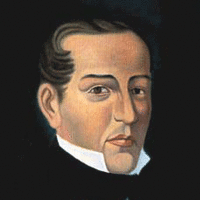
José María Heredia y Heredia (Santiago de Cuba, 31 de diciembre de 1803- Ciudad de México, 7 de mayo de 1839) fue un poeta nacido en Cuba considerado por muchos como el primer poeta romántico de América, el iniciador del romanticismo en Latinoamérica y uno de los poetas más importantes de la lengua española. En años más recientes esta filiación romántica se ha matizado, señalándose la importancia del neoclasicismo y de la estética de la sensibilidad ilustrada para el pensamiento y la obra heredianos. Es conocido como el “Cantor del Niagara” y fue nombrado poeta nacional de Cuba.
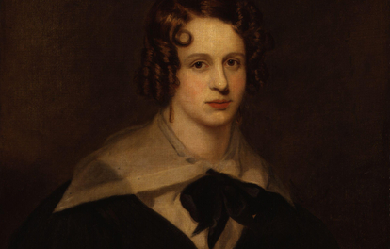
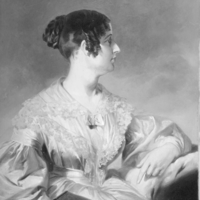
Felicia Dorothea Hemans (25 September 1793 – 16 May 1835) was an English poet. Her first poems, dedicated to the Prince of Wales, were published in Liverpool in 1808, when she was fourteen, arousing the interest of poet Percy Bysshe Shelley, who briefly corresponded with her. She quickly followed them up with “England and Spain” (1808) and “The Domestic Affections” (1812).

Now, My Words: Past I'm an enthusiast and connoisseur of my passions for music, movies, fishing, hunting, and hiking in woods, mountains, what have you for clear mind and exploration of known and unknown realms of reality and fantasy through writing. My admiration for these endeavors comes from no product, mental or physical , at the event's end but an addictive high from the process of participating. Playing the drums or listening to guitar, acting or viewing, keeping or tossing, Taking or passing, seeking or denying. It has, is, and always will be at the hands of amusement through partaking in whatever occurrence. The passion of writing
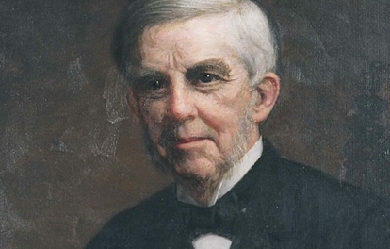
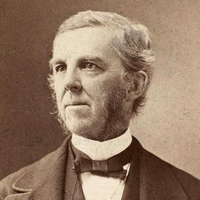
Oliver Wendell Holmes (August 29, 1809 – October 7, 1894) was an American physician, poet, and polymath based in Boston. Grouped among the fireside poets, he was acclaimed by his peers as one of the best writers of the day. His most famous prose works are the "Breakfast-Table" series, which began with The Autocrat of the Breakfast-Table (1858). He was also an important medical reformer. In addition to his work as an author and poet, Holmes also served as a physician, professor, lecturer, inventor, and, although he never practiced it, he received formal training in law.
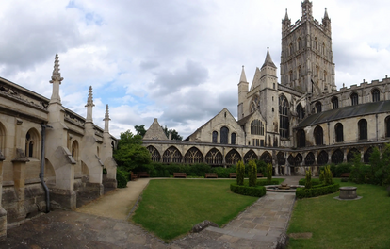
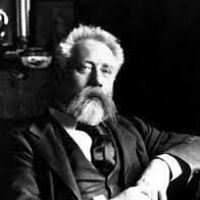
William Ernest Henley (23 August 1849 – 11 July 1903) was an English poet, critic and editor, best remembered for his 1875 poem “Invictus”. Henley was born in Gloucester and was the oldest of a family of six children, five sons and a daughter. His father, William, a bookseller and stationer, died in 1868 and was survived by young children and creditors. His mother, Mary Morgan, was descended from the poet and critic Joseph Wharton. Between 1861 and 1867, Henley was a pupil at the Crypt Grammar School (founded 1539).
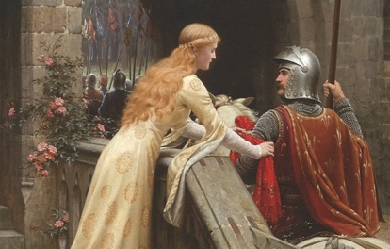

Alexander Hernández (San Salvador, 1987). Licenciado en Letras y Maestro en Estudios de Cultura Centroamericana. Miembro fundador del Círculo Literario Solsticio en 2010. Ganador de Juegos Florales salvadoreños en la rama de poesía en 2013, y primer lugar en el Certamen Universitario “Justo Juez de la Noche”, además del primer premio en el II Certamen Literario denominado «Maura Echeverría», Ministerio de Educación de El Salvador en 2018. Se desempeña como corrector de estilo y director de la Revista cultural Malabar. Entre sus obras destacan: El final del laberinto (cuentos, 2015), La evolución del cisne en la poesía de Rubén Darío (ensayo, 2016), Viaje al centro del sueño (poesía, 2018), El arte del bonsái (microcuentos, 2022) y Memoria de las campanas (poesía, 2022).


